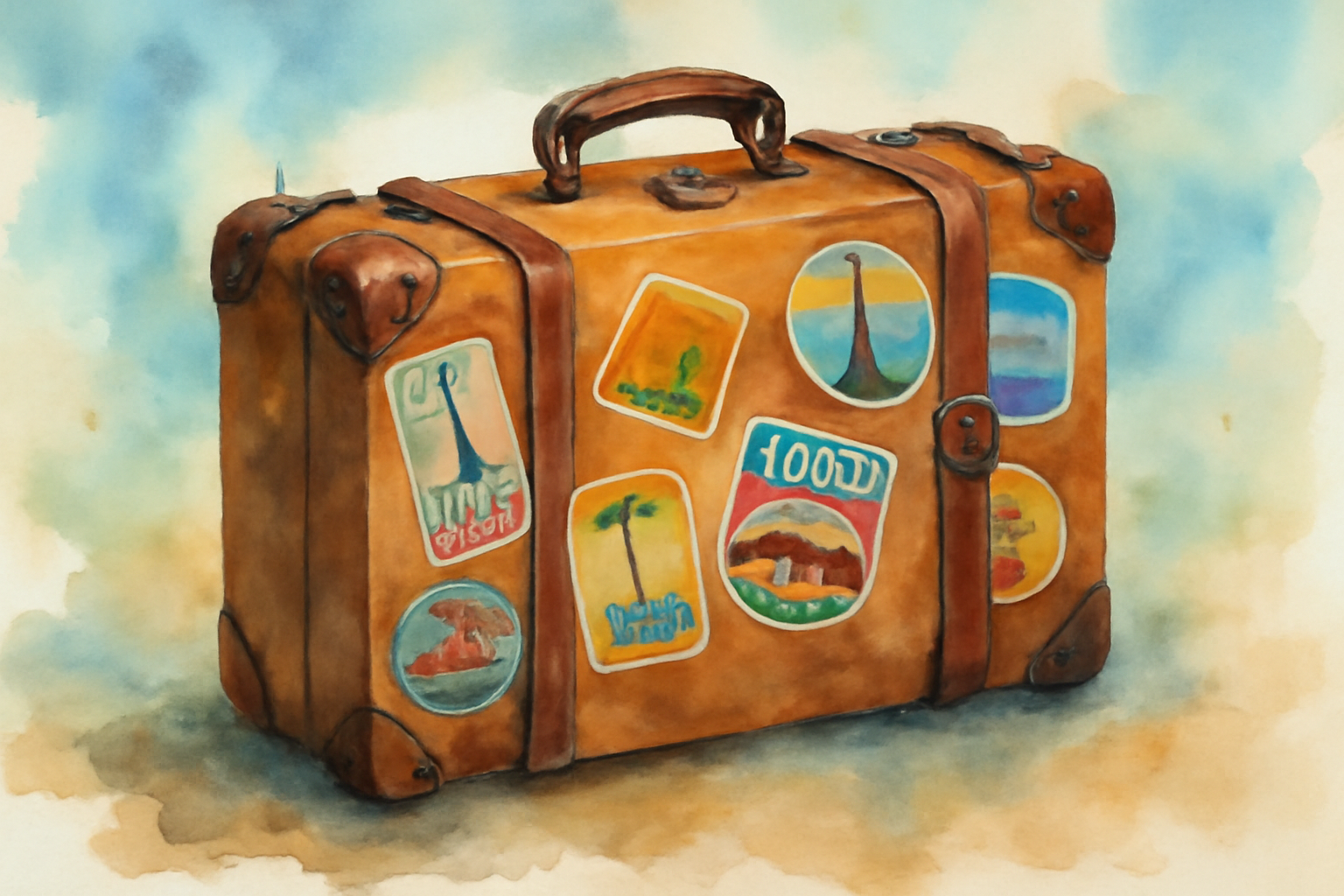
Exceptional Web Design for Travel: Attract & Book UK Travellers

Essential Elements of Effective Travel Website Design
In today's digital landscape, a travel website serves as your virtual shopfront and often provides the first impression for potential travellers. Getting the design right isn't just about aesthetics—it's about creating an immersive experience that inspires wanderlust while delivering practical functionality.
When we look at visual-centric design principles, the most successful travel websites understand that imagery is everything. High-resolution, authentic photographs that showcase destinations in their best light can transport visitors and create emotional connections before they've even packed a suitcase. The key is balance—stunning visuals that load quickly and don't overwhelm the user interface.
Responsive design has moved from being a nice-to-have to an absolute necessity. With travellers researching and booking across multiple devices—starting on a mobile during their commute and finalising details on a laptop at home—your website must provide a seamless experience regardless of screen size. This means fluid layouts, flexible images, and adaptive content that reorganises itself intelligently across devices.
"The best travel websites don't just show you a destination; they make you feel it. They transform digital browsing into an emotional journey that begins the moment a visitor lands on your homepage," explains Sarah Thompson, Travel UX Consultant at Digital Journeys.
When considering user experience for travel website visitors, we must acknowledge their specific mindset. They're often in discovery mode, comparing options, seeking inspiration, or hunting for specific information. Navigation should support these varied intentions, allowing for both serendipitous exploration and directed searches for practical details like pricing or availability.
Loading speed deserves particular attention in travel website design. Studies consistently show that users abandon websites that take more than a few seconds to load, and this is especially true in the travel sector where competitors are just a click away. Optimisation techniques like image compression, code minification, browser caching, and lazy loading of content below the fold can dramatically improve performance.
Examining successful travel websites reveals common design elements: prominent search functionality, inspirational hero images, clear navigation to popular destinations, and strategically placed calls to action. Sites like Airbnb, Expedia, and Booking.com continually refine their designs based on user behaviour, creating interfaces that balance inspiration with utility.
Creating Intuitive Navigation for Travel Websites
Navigation design for travel websites requires a special approach that aligns with how travellers think and plan. The most effective sites structure their navigation to mirror the customer journey—from dreaming about destinations to researching options, making bookings, and preparing for their trip.
A logical site structure might begin with inspiration (destinations, experiences, special offers), move to planning tools (itinerary builders, travel guides), and culminate in practical booking functions. This approach guides visitors naturally through the decision-making process rather than forcing them to adapt to your organisational structure.
Search functionality is particularly crucial for travel websites, where users often have specific requirements. Advanced filtering options allow visitors to narrow results by destination, date, price range, accommodation type, or activities available. The best implementations offer predictive search, recent search history, and the ability to save preferred filters for return visits.
When designing calls-to-action for travel websites, clarity and prominence are essential. Booking buttons should stand out visually through contrasting colours, strategic placement, and action-oriented language. Rather than generic "Submit" buttons, effective CTAs use specific language like "Check Availability" or "Reserve Your Room" that clearly communicates the next step.
Menu organisation for travel sites benefits from a thoughtful information hierarchy. Primary navigation should focus on the most common user needs—destinations, accommodation types, special offers—while secondary navigation can address supporting content like about pages, contact information, or loyalty programmes. Avoiding dropdown menus with too many options prevents overwhelming visitors.
For complex travel websites with multiple sections and layers of content, breadcrumbs and wayfinding elements become essential navigation aids. These visual cues help users understand their location within the site architecture and provide quick paths back to previous sections. This is particularly important for large destination sites where users might explore deeply into specific locations.
Showcasing Destinations Through Immersive Design
The art of showcasing travel destinations effectively begins with exceptional visual content. High-quality photography should capture both iconic landmarks and authentic moments, while video content can convey the atmosphere, sounds, and movement that make a destination unique. Investment in professional visual assets consistently delivers returns through improved engagement and conversion rates.
Virtual tours and 360° views have transformed how travellers research destinations. These immersive elements allow potential visitors to virtually step inside hotel rooms, explore restaurant interiors, or experience attractions before booking. When combined with interactive maps that highlight points of interest with rich media popups, these tools create a compelling pre-travel experience.
Storytelling through visual design elevates travel websites beyond simple catalogues of places and services. This might include parallax scrolling effects that reveal a destination's story as users move down the page, cinemagraphs that bring subtle movement to otherwise static images, or thoughtfully designed typography that reflects the character of different locations.
Creating engaging destination guides requires layouts that balance information density with visual appeal. Effective designs often use card-based interfaces for scannable content, expandable sections for those seeking deeper information, and consistent visual systems that help users quickly identify different types of content—from practical tips to historical background.
User-generated content has become an invaluable trust-building element in travel website design. Integrating Instagram feeds, visitor photos, or traveller stories provides authentic perspectives that professional marketing materials cannot match. The most effective implementations curate this content carefully while still maintaining its authentic voice.

Optimising Booking Systems for Maximum Conversions
The booking funnel represents the critical path to conversion on any travel website. Effective booking systems follow established design principles: clarity at each step, visual progress indicators, minimal form fields, and persistent display of key information like total cost and booking details throughout the process.
Simplifying the reservation process doesn't mean removing necessary steps—rather, it involves making each interaction as frictionless as possible. This includes implementing autofill functionality, breaking complex forms into logical steps, offering guest checkout options, and providing multiple payment methods to accommodate different user preferences.
For many travel businesses, third-party booking system integration offers the fastest path to robust functionality. When selecting and implementing these systems, prioritise those with customisable interfaces that can be styled to match your brand, transparent fee structures, and robust APIs that allow for data exchange with your marketing and customer relationship management systems.
Best practices for displaying availability, pricing, and packages include transparent presentation of all costs (including taxes and fees), clear indication of room types or service differences, and visual highlighting of special offers or limited availability to create urgency. Calendar views should clearly show available dates and price variations to help users identify optimal booking times.
Reducing abandonment during the booking process requires attention to common friction points. These include unexpected costs appearing late in the process, complex form requirements, technical glitches, and lack of payment options. Implementing analytics to identify where users drop off, then systematically addressing these issues, can dramatically improve conversion rates.
Mobile-First Design for Travel Websites
The mobile-first approach has become particularly relevant for travel websites as smartphones increasingly dominate the research and booking process. This design philosophy prioritises the mobile experience during planning and development, then progressively enhances the interface for larger screens rather than the reverse.
Touch-friendly interfaces accommodate the fundamentally different way users interact with mobile devices compared to desktop experiences. This means larger touch targets (minimum 44×44 pixels), swipe-able galleries instead of tiny thumbnails, collapsible menus to conserve screen space, and elimination of hover-dependent functions that don't translate to touch interfaces.
Location-based features create powerful opportunities for travel websites to deliver contextually relevant content. GPS integration can help users find nearby attractions, restaurants, or accommodations; provide directions; show local weather conditions; or even trigger special offers when users are in specific locations.
Performance optimisation becomes even more critical in the mobile context, where network conditions vary dramatically. Techniques such as adaptive loading (delivering different content based on connection speed), selective loading of images, and minimising third-party scripts can ensure usability even in challenging connectivity situations.
Progressive Web App capabilities offer significant advantages for travel websites, combining the best aspects of websites and native applications. Features like offline functionality, home screen installation, push notifications, and device hardware access create app-like experiences without requiring users to visit app stores—particularly valuable for destinations where visitors may have limited data access.
Building Trust Through Strategic Web Design
In the travel industry, where customers make significant financial commitments for experiences they cannot sample in advance, trust signals become essential design elements. These include security badges, payment protection information, GDPR compliance indicators, and secure booking symbols—all strategically placed near points of commitment to reassure hesitant travellers.
Reviews and testimonials represent powerful social proof when thoughtfully integrated into design. Rather than relegating these to a dedicated section, effective travel websites weave relevant reviews throughout the user journey—showcasing accommodation reviews on room detail pages or tour testimonials alongside itinerary information. Star ratings, verified purchase badges, and reviewer profiles enhance credibility.
Accreditations, awards, and partnerships should be visibly showcased to build credibility. However, their presentation requires finesse—simple logo displays often lack context. The most effective implementations briefly explain the significance of each credential and how it benefits the traveller, transforming industry acronyms into meaningful trust signals.
Transparency in presenting policies builds confidence in potential bookers. Key terms like cancellation policies, deposit requirements, and refund conditions should be accessible without extensive searching. Progressive disclosure techniques—showing summaries with expandable details—balance the need for transparency with clean design.
Creating "About Us" and team pages that humanise your travel brand can significantly impact trust, particularly for smaller operators competing with major booking sites. Effective designs go beyond corporate history to showcase the people behind the brand, their expertise and passion for travel, and authentic stories that demonstrate commitment to customer experiences.
Conclusion
Your travel website is more than just a digital brochure—it's a powerful tool that can inspire wanderlust, facilitate bookings, and build lasting relationships with travellers. By implementing thoughtful design principles that balance visual appeal with functionality, you'll create a website that stands out in the competitive travel landscape. Remember that the best travel websites evolve with changing user expectations and technological advancements. Invest in regular updates, analyse user behaviour, and continually refine your design to provide the exceptional digital experience that today's travellers demand. Ready to transform your travel business with a website that converts? Start by implementing these design principles and watch your bookings soar!


.svg)
%20(200%20x%20500%20px).svg)



%20(1).svg)